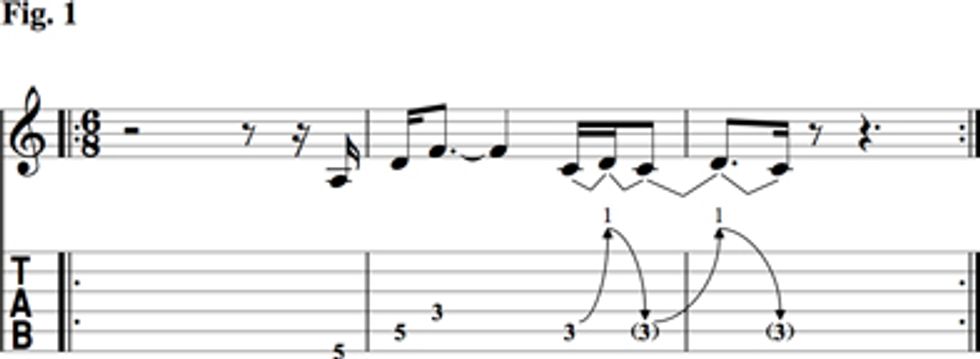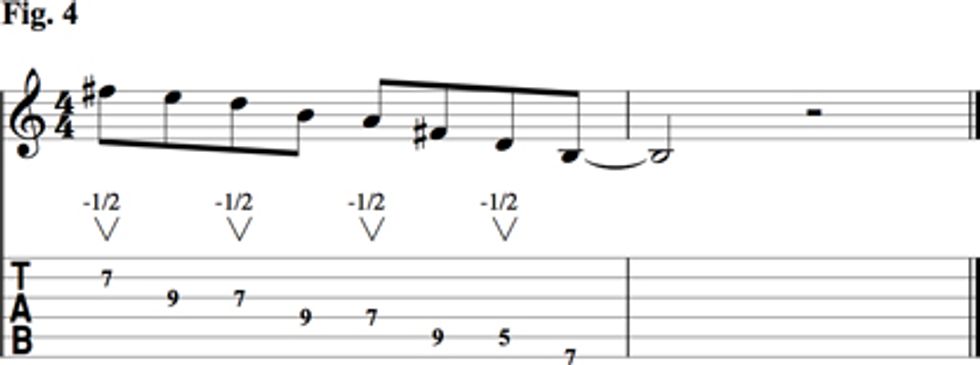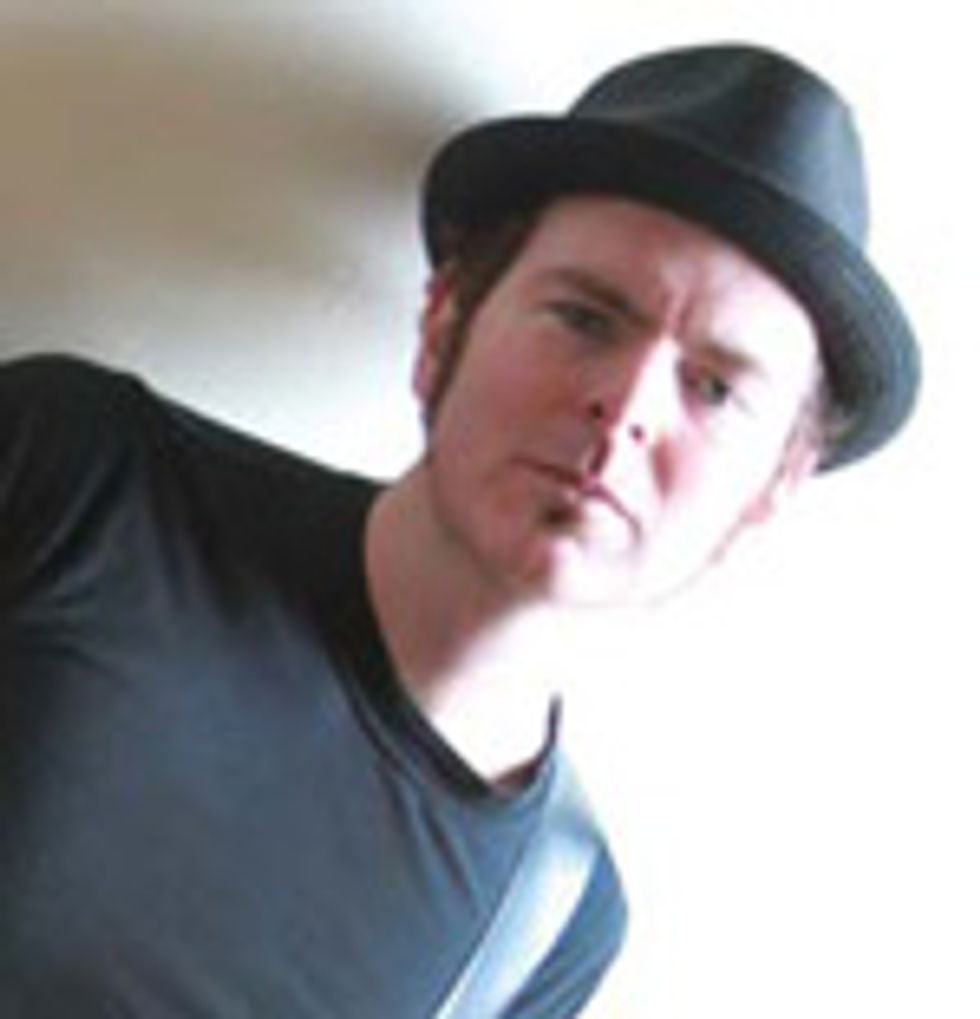Chops: Intermediate
Theory: Beginner
Lesson Overview:
• Understand the key elements
of Jeff Beck’s unique style.
• Learn how to use rhythmic
motifs to create interesting
phrases.
• Create vocal-sounding melodies
using the vibrato bar.
In my previous column, [October 2012,“Beck’s Blues: The Early Years”], we took a look at some licks that Beck used in the first decade or so of his career. Here, we could see shades of what was to come. Not that he wasn’t amazing back then, but he really hit his stride in the mid ’70s with the must-have trio of Blow by Blow, Wired, and There and Back. These recordings are essential for any guitarist and the blueprint for players like Steve Vai and Joe Satriani.
It was on these recordings that Beck really came into his own as an artist and developed his signature sound. Around this point, he became strictly a Fender player—most notably with the Stratocaster. Bending with both the vibrato bar and fingers became a hallmark of his sound, as did his use of harmonics. It’s important to note that Beck has his vibrato bar set to “float”—so much so that he can pull up a major third on the 3rd string. This is the key to much of what he does, and if you really want to dive fully into his style, you’ll need to have a floating trem. Also during this time, Beck abandoned his flatpick, choosing instead to attack the strings with his bare fingers—yet another hallmark of his sound.
A great intro to Beck’s use of bends is shown in Fig. 1. This is similar to something you’d hear in his version of “Goodbye Pork Pie Hat,” the Charles Mingus classic he included on Wired. In this lick, we’re bending a low C to D and then releasing it back down. This subtle way of sounding these notes makes them so much more interesting. This nuance is what makes Beck such an expressive musician.

We stick with the Mingus tune for the phrase in Fig. 2. It’s a very cool ascending D major pentatonic (D–E–F#–A–B) lick that uses motivic development. In plain terms, Beck is playing a melodic statement up the scale using a similar rhythmic pattern. Just for fun, as he does, I kick on a ring modulator on the last note!

The next phrase isn’t too difficult, once you get it under your fingers. Fig.3 is a speedy lick that Beck uses quite a bit and is based out of a B minor pentatonic scale (B–D–E–F#–A). Here, I am using a pickand- fingers attack because it makes the lick a little easier to play, and the sound of the fingers is a bit warmer than that of the pick.

If you want to get into how Beck uses his vibrato bar to add inflections to a melody, Fig. 4 is a good place to start. This technique takes some time to develop and is much easier with a floating vibrato system. Beck holds the bar in his hand while picking and lets the springs do a lot of the work. So push down on the bar and let it come back into place on it’s own. This will guarantee that it will return to pitch.

Another certified Beck staple is shown in Fig. 5. This is a fantastic use of natural harmonics on each string. Over each chord, Beck plays a dominant 7 arpeggio using just the harmonics between the 5th and 2nd frets. It takes some time to find them and perfect this technique, so I suggest using the bridge pickup and also picking close to the bridge to get the notes to really pop out. On the last note, I am pulling up on the bar to raise the pitch a whole-step and sound the root—G. If you don’t have a trem and your guitar allows it, you can push the string down behind the nut to raise the note and get the same effect.

I hope this lesson has helped shed some light on one of the greatest and most original musicians of our time.
 Jeff McErlain
Jeff McErlainJeff McErlain is a New York City-based guitar player, producer, songwriter, and educator. He performs regularly in NYC and abroad with his trio and blues band. Jeff has a number of instructional DVDs available at TrueFire.com, and he is a featured instructor for the National Guitar Workshop. Jeff's latest CD I'm Tired is available on iTunes or at jeffmcerlain.com.

















